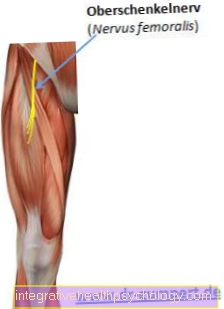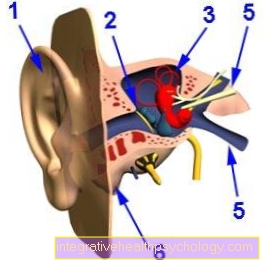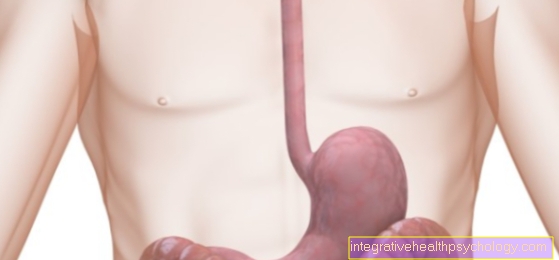Clogged carotid artery - what to do?
introduction
A "clogged" carotid artery is a narrowing of the main cervical artery (carotid artery) due to deposits on the vessel wall (arteriosclerosis), so that the blood flow to the head / brain is difficult or reduced. This narrowing of one of the carotid arteries on the left or right side of the neck is also known in medicine as "carotid stenosis" (stenosis = narrowing).
Fats, blood clots, calcium and connective tissue are deposited in the innermost layer of the vessel wall, which means that the carotid artery is not only narrower, but also harder and less elastic.

Both the main trunk of the carotid artery (common carotid artery) and its internal (internal carotid artery) or external (external carotid artery) outlet vessel can be affected.
Congestion or narrowing of the carotid arteries generally affects more men than women; the risk of developing them increases with age and with certain secondary diseases such as diabetes mellitus (s. Consequences of diabetes), obesity (s. Consequences of being overweight), high blood lipid levels (s. Hyperlipidemia), high blood pressure etc.
According to statistics, it affects 0.2% of men under 50 and 7.5% of men and 5% of women over 80.
The reasons
The most common cause of blocked or narrowed carotid arteries are "vascular calcifications" of the innermost layer of the vessel wall. More precisely, it is not just pure vascular calcifications - also arteriosclerosis - but about deposits of fats, blood clots and lime as well as an overgrowth of these deposits with connective tissue and vascular muscles, so that the blood vessel gradually narrows further due to the formation of plaque and the blood can no longer flow past unhindered. Certain diseases and stimulants are risk factors for such vascular calcification, including high blood pressure, diabetes mellitus, obesity, smoking and increased blood lipid levels (these risk diseases can be summarized as metabolic syndrome).
Read our article on this: Causes of atherosclerosis
The larger these deposits or plaques become in the vessel walls of the carotid artery, the more it clogs and the less well the blood can flow towards the head and brain, so that in the event of severe constriction, there can even be an undersupply of blood. The larger the plaque, the greater the risk that it will become unstable, detach itself and wash away until it gets stuck in a smaller vessel in the brain and completely obstructs it - a stroke can result.
Find out more about this here: Calcified carotid artery - causes, diagnosis & therapy
The diagnosis
In order to diagnose a blocked carotid artery, in addition to a detailed anamnesis and the search for typical accompanying secondary diseases, a physical examination may also be necessary, during which a weakened pulse rate in the affected carotid artery may be noticed. In addition, when listening to the carotid artery with the stethoscope, a flow noise may be noticed.
Blood tests can be used to search for increased blood lipid / cholesterol, blood sugar values and changed coagulation parameters.
With the help of a special ultrasound examination, the so-called Doppler sonography, the extent of the narrowing can then be visualized. Computed tomography (CT angiography) or magnetic resonance tomography can be used to depict the vessels even more precisely.
Read more on the topic: Doppler sonography.
The degree of narrowing
The degree of narrowing of the carotid arteries is determined by means of a specific ultrasound examination (Duplex sonography) determined at which the peak speed of blood flow in the respective blood vessel as well as the quotient from the peak velocity in the internal carotid arteries and the common carotid arteries, as well as the extent of the narrowing by plaques is measured.
The higher the speed of blood flow in a vessel, the greater the constriction and, in this case, the more clogged the carotid artery
The constrictions are divided into different degrees, a so-called Degree of stenosis of 90%.
The symptoms
Clogged carotid arteries often remain asymptomatic or have few symptoms for a long time, so that they can initially go undetected.
Only from a certain degree of stenosis do the first symptoms arise, which are based on a reduced or insufficient blood flow to the brain arteries.
Typical complaints that can cause clogged carotid arteries are, for example, visual disturbances such as double vision or even complete visual field defects (amaurosis fugax), speech disorders, headaches, dizziness attacks or even symptoms of paralysis. These symptoms come on very suddenly and like attacks, in the best case they subside after a few minutes to hours. If this is the case, one speaks of a TIA, a so-called transitory ischemic attack, a kind of "mini-stroke".
If the symptoms persist over a longer period of time or only partially or not at all regress, one speaks of a stroke (apoplexy).
Read our article on this: Signs of a stroke
The pain as a symptom
A blocked carotid artery can cause sensory disturbances. Not enough blood and, as a result, not enough oxygen is pumped into the brain. This can result in failure symptoms and sensory disorders. This can manifest itself in the form of pain.
However, pain occurs in rare cases and usually appears in an advanced stage.
However, pain after surgery to remove arteriosclerotic plaques is relatively common. After a few days, however, these subside again.
The therapy
Conservative Therapy
The conservative treatment of blocked carotid arteries is understood to mean all therapeutic measures that can be carried out instead of an operation.
Once the arteries are blocked or narrowed, this fact cannot be reversed without surgery. Only the further progression of the narrowing can be prevented by eliminating all risk factors. This includes, on the one hand, that obesity is reduced, stress is reduced and smoking is stopped.
Secondly, secondary diseases such as high blood pressure must be treated well so that the blood pressure is set to normal values. (s. Lower high blood pressure)
The same applies to the sugar levels in the blood in diabetes mellitus.s. Therapy of diabetes)
In addition, the risk of a stroke due to dissolving plaques can be reduced by taking medicated blood thinners to prevent clogging blood clots from forming.
The drugs
The use of certain medications for blocked carotid arteries is part of conservative therapy and is used before and / or after any surgical therapy in order to reduce the risk of a stroke. The most important drug therapy includes the use of blood-thinning agents such as Acetylsalicylic acid (ASA), which prevents blood clots from forming.
Furthermore, various medications can be given to adjust further risk factors, such as sugar-lowering, antihypertensive and antihypertensive drugs. You can find an overview of these drugs under Medicines for Diabetes and Medicines for High Blood Pressure.
Drug therapy alone is only useful if the degree of stenosis is still asymptomatic and mainly serves to prevent the further progression of the narrowing. If a certain degree of stenosis is exceeded or if the blocked carotid artery becomes symptomatic, the therapy must be extended to an operation.
The operation
Surgery for blocked carotid arteries is always necessary if the narrowing has progressed so far that the risk of suffering a transient ischemic attack or stroke is very high, or if the person concerned has already become symptomatic with a stroke. For all symptomatic blocked carotid arteries and for asymptomatic stenoses> 70%, surgery is generally recommended.
There are two main surgical techniques that can be used:
On the one hand, it is possible to remove the constriction, i.e. the calcification or plaque - the affected vessel is opened and the plaque is peeled off.
This procedure is called thrombendateriectomy (TEA) called.
On the other hand, there is the possibility of widening the blocked / constricted area by means of a balloon catheter and, if necessary, even inserting a stent in order to keep the constriction permanently open or further open. One then speaks of a Carotid angioplasty.
The stent
The introduction of a stent - a vascular support made of metal wire - as part of a carotid angioplasty is the most frequently performed surgical procedure these days.
As a rule, the person concerned receives a local anesthetic under which a hose system (catheter) is then inserted into the body via the inguinal artery. Once the catheter has been advanced to the narrowed carotid artery, the narrowing is widened by means of a balloon and then lined with a stent.
Either metal-coated stents or so-called drug-eluting stents can be used, the latter being coated with drugs that prevent cell renewal and thus the vascular cells from overgrowing the stent. Depending on the stent material used, the duration for which a medicinal blood thinning is necessary after the operation differs.
The surgical risks
The most important risk that exists during an operation for carotid stenosis is the loosening of plaque material, which clogs small downstream vessels and leads to stroke symptoms. During the operation, regardless of whether a TEA or a carotid angioplasty is performed, work is carried out in the constriction area, so that there is inevitable risk of material loosening.
Prognosis
The more the carotid arteries are narrowed, the higher the risk that there will be insufficient blood supply to the brain (ischemia) or that the vascular plaques will become unstable, loosen and clog smaller brain arteries completely (stroke). The clogged carotid artery often remains without symptoms for those affected for a long time, yet 2% of asymptomatic stenoses annually trigger a stroke.
By reducing the risk factors or treating the high-risk diseases, the formation of vascular constrictions can be prevented, but existing calcifications can no longer be reversed - only the progression can be avoided. From a certain degree of constriction, however, therapy is necessary, either conservatively or surgically, to prevent life-threatening complications.
You may also be interested in this topic:
- Prevention of arteriosclerosis
- Calcifications in the abdominal artery
Can you feel a blocked carotid artery?
A blocked carotid artery is usually tender on pressure. This means that there is pain when you touch this area.
In addition, constipation can manifest itself through different symptoms. Frequent loss of consciousness, dizziness, and double vision are characteristic symptoms. Furthermore, speech and swallowing disorders can occur and symptoms of paralysis are not uncommon. If the above symptoms occur more frequently, you should definitely see a doctor to clarify this. At an advanced stage, a blocked carotid artery can also cause a stroke.



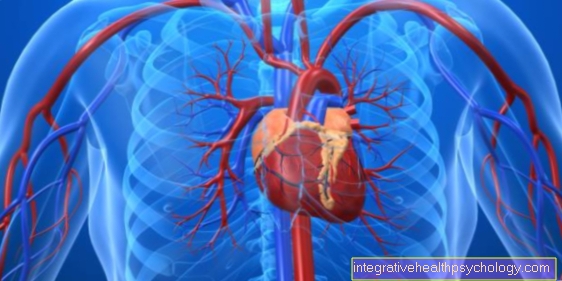



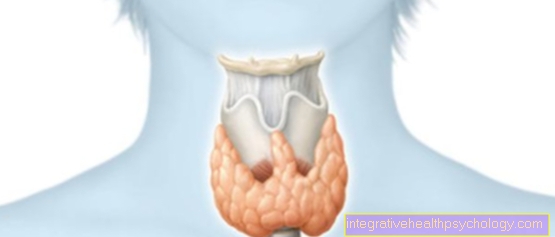






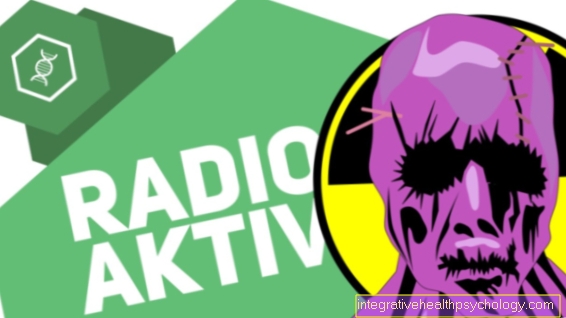

.jpg)




